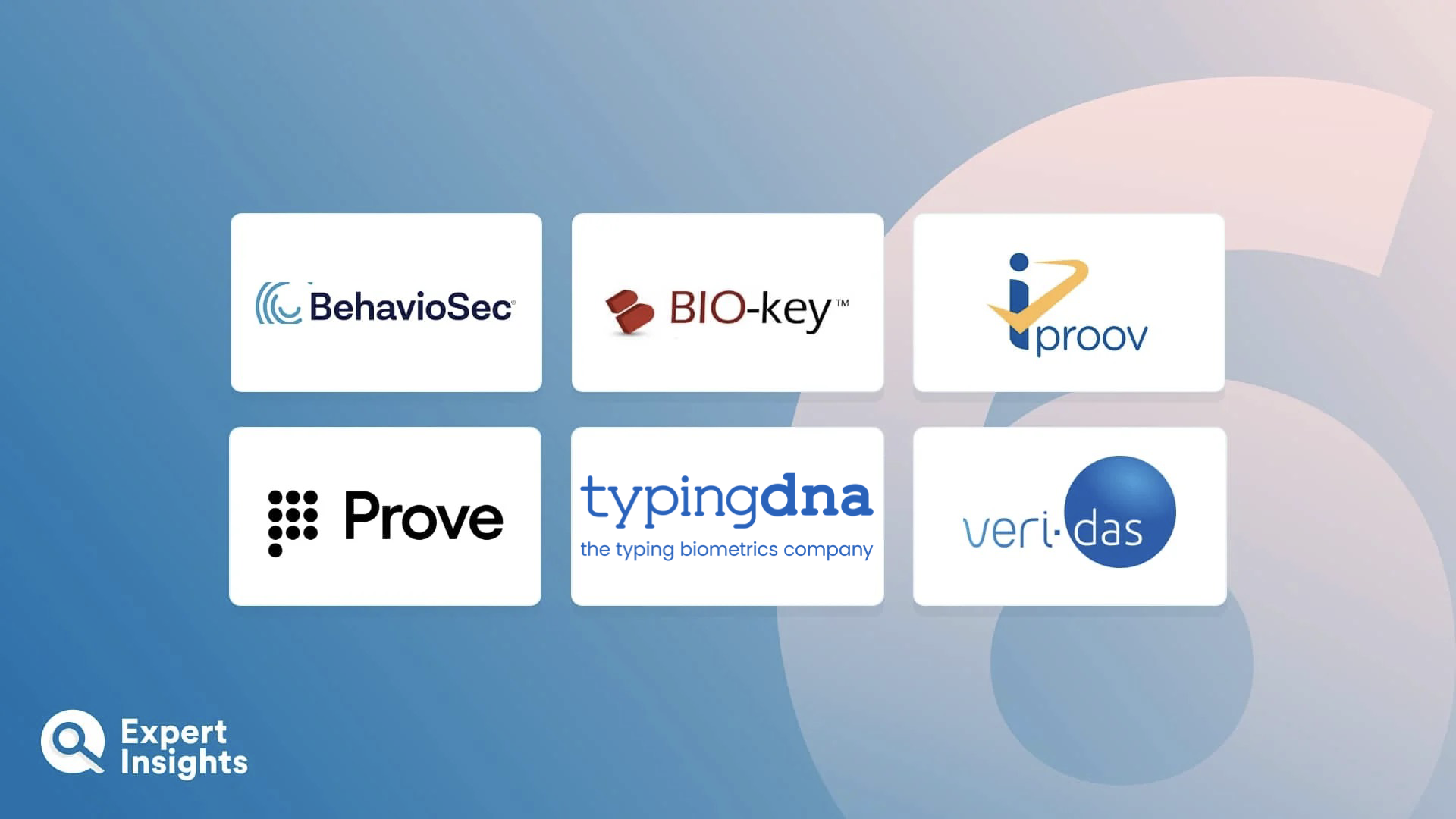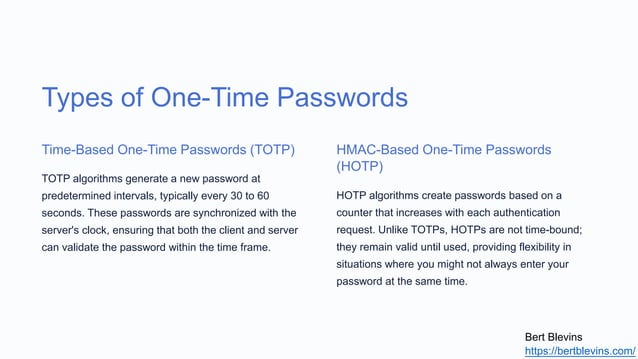“Beyond Passwords: A Deep Dive into Biometric Authentication
Artikel Terkait Beyond Passwords: A Deep Dive into Biometric Authentication
- The Silent Killer: Understanding And Managing Technical Debt
- Integration Testing: Ensuring The Harmony Of Your Software Orchestra
- Augmented Analytics: The Democratization Of Data Insights
- The Rise Of The Intelligent Assistant: Navigating The World With AI By Your Side
- Single Sign-On (SSO): Your Key To Seamless And Secure Access
Table of Content
Video tentang Beyond Passwords: A Deep Dive into Biometric Authentication
Beyond Passwords: A Deep Dive into Biometric Authentication

In today’s increasingly digital world, the security of our data and devices is paramount. Traditional authentication methods like passwords and PINs are proving increasingly vulnerable to sophisticated attacks and user negligence. Enter biometric authentication, a technology that leverages unique biological and behavioral characteristics to verify identity. No longer relegated to science fiction, biometrics is becoming a mainstream solution for enhanced security and user convenience across a wide range of applications, from unlocking smartphones to accessing secure facilities. This article delves into the intricacies of biometric authentication, exploring its various types, advantages, disadvantages, implementation considerations, and future trends.
What is Biometric Authentication?
At its core, biometric authentication is a security process that relies on the inherent and unique traits of an individual to verify their identity. Unlike knowledge-based authentication (passwords, PINs) or token-based authentication (smart cards, security tokens), biometrics uses "something you are" or "something you do" to grant access. This eliminates the need for users to remember complex passwords or carry physical tokens, offering a more convenient and often more secure alternative.
The process generally involves two key stages:
- Enrollment: The individual’s biometric data is captured and processed, creating a template or digital representation of their unique characteristic. This template is then securely stored in a database or on the device.
- Authentication: When access is requested, the individual presents their biometric characteristic again. The system captures this new data, processes it, and compares it to the stored template. If the match is strong enough, the individual is authenticated and granted access.
Types of Biometric Authentication:
Biometric authentication methods can be broadly categorized into two main types: physiological and behavioral.

1. Physiological Biometrics: These methods rely on the physical characteristics of an individual.
- Fingerprint Scanning: This is one of the most widely used and mature biometric technologies. It involves capturing the unique patterns of ridges and valleys on a person’s fingertip. Fingerprint scanners come in various forms, including optical, capacitive, and ultrasonic. They are commonly found in smartphones, laptops, and access control systems.
- Facial Recognition: This technology analyzes the unique features of a person’s face, such as the distance between the eyes, the shape of the nose, and the contours of the jawline. Facial recognition systems can be used for unlocking devices, identifying individuals in surveillance footage, and controlling access to buildings. Modern systems often employ 3D facial mapping for enhanced accuracy and resistance to spoofing.
- Iris Scanning: The iris, the colored part of the eye, contains a complex and highly unique pattern of ridges, furrows, and spots. Iris scanning is considered one of the most accurate biometric authentication methods due to the stability and complexity of the iris pattern. It’s often used in high-security environments.
- Retinal Scanning: Similar to iris scanning, retinal scanning analyzes the unique pattern of blood vessels in the retina, located at the back of the eye. However, retinal scanning requires the user to look into a light source very closely, making it less user-friendly than iris scanning. It’s typically used in very high-security applications.
- Hand Geometry: This method measures the size and shape of a person’s hand, including the length and width of the fingers and the palm. Hand geometry scanners are relatively simple and cost-effective, making them suitable for access control in workplaces and other environments.
- Vein Recognition: This technology uses infrared light to capture the unique pattern of veins in a person’s hand or finger. Vein patterns are difficult to forge, making vein recognition a secure biometric method.

2. Behavioral Biometrics: These methods rely on the unique behavioral patterns of an individual.

- Voice Recognition: This technology analyzes the unique characteristics of a person’s voice, such as pitch, tone, and speech patterns. Voice recognition is commonly used for voice assistants, phone banking, and access control.
- Signature Dynamics: This method analyzes the way a person signs their name, including the speed, pressure, and rhythm of the signature. Signature dynamics is often used for verifying electronic signatures and authenticating transactions.
- Gait Analysis: This technology analyzes the way a person walks, including their stride length, walking speed, and body posture. Gait analysis can be used for identifying individuals in surveillance footage and detecting changes in a person’s health.
- Keystroke Dynamics: This method analyzes the way a person types on a keyboard, including the typing speed, the time between keystrokes, and the pressure applied to the keys. Keystroke dynamics can be used for continuous authentication, verifying a user’s identity throughout a session.
Advantages of Biometric Authentication:
- Enhanced Security: Biometrics are much harder to forge or steal than passwords or tokens, providing a higher level of security against unauthorized access.
- Convenience: Biometrics eliminate the need for users to remember complex passwords or carry physical tokens, simplifying the authentication process.
- Accountability: Biometrics can provide a clear audit trail of who accessed what and when, improving accountability and deterring fraud.
- Non-Transferable: Unlike passwords or tokens, biometric traits are unique to an individual and cannot be easily transferred or shared.
- Reduced Costs: Over time, biometrics can reduce costs associated with password resets, lost tokens, and fraud.
Disadvantages of Biometric Authentication:
- Privacy Concerns: The collection and storage of biometric data raise privacy concerns, as this data could be misused or compromised.
- Accuracy Limitations: Biometric systems are not perfect and can sometimes produce false positives (accepting an unauthorized user) or false negatives (rejecting an authorized user).
- Vulnerability to Spoofing: Some biometric systems can be spoofed using fake fingerprints, photographs, or voice recordings.
- Environmental Factors: Environmental factors such as lighting, temperature, and noise can affect the accuracy of biometric systems.
- Cost of Implementation: Implementing biometric authentication systems can be expensive, especially for large organizations.
- Data Security: Biometric templates are highly sensitive. If a biometric database is compromised, the impact on users can be devastating as biometric traits are difficult or impossible to change.
- Ethical Considerations: Biometric data can be used for surveillance and tracking, raising ethical concerns about privacy and civil liberties.
Implementation Considerations:
When implementing biometric authentication, several factors must be considered:
- Accuracy Requirements: The required level of accuracy will depend on the application. High-security applications will require more accurate biometric systems than low-security applications.
- User Acceptance: Users must be comfortable with the biometric authentication method being used. Systems that are intrusive or inconvenient are less likely to be adopted.
- Security of Biometric Data: Biometric data must be stored securely to prevent unauthorized access or misuse. Encryption and access controls are essential.
- Scalability: The biometric system must be able to scale to meet the needs of the organization.
- Cost: The cost of implementing and maintaining the biometric system must be considered.
- Compliance: Ensure compliance with relevant data privacy regulations, such as GDPR and CCPA.
- Backup Authentication Methods: It’s crucial to have backup authentication methods in place in case the biometric system fails or is unavailable.
Future Trends in Biometric Authentication:
The field of biometric authentication is constantly evolving, with new technologies and applications emerging all the time. Some of the key trends include:
- Multimodal Biometrics: Combining multiple biometric modalities (e.g., fingerprint and facial recognition) to improve accuracy and security.
- Liveness Detection: Implementing advanced liveness detection techniques to prevent spoofing attacks.
- Behavioral Biometrics: Increased adoption of behavioral biometrics for continuous authentication and fraud detection.
- Cloud-Based Biometrics: Storing and processing biometric data in the cloud for scalability and cost-effectiveness.
- Biometrics on Wearable Devices: Integrating biometrics into wearable devices such as smartwatches and fitness trackers.
- AI and Machine Learning: Using AI and machine learning to improve the accuracy and security of biometric systems.
- Voice Biometrics for Customer Service: Increasing use of voice biometrics to streamline customer service interactions and prevent fraud.
FAQ:
Q: Is biometric authentication foolproof?
- A: No. While biometrics offer a higher level of security than traditional methods, they are not foolproof. They can be vulnerable to spoofing attacks and environmental factors.
Q: What happens if a biometric system rejects an authorized user?
- A: Most biometric systems have a fallback mechanism, such as a password or security question, that can be used to authenticate the user.
Q: How is biometric data stored?
- A: Biometric data is typically stored as a template, which is a mathematical representation of the unique characteristics of the biometric trait. The template is usually encrypted to protect it from unauthorized access.
Q: Is biometric authentication more secure than a strong password?
- A: Generally, yes. Even a strong password can be compromised through phishing, brute-force attacks, or social engineering. Biometrics are much harder to steal or forge.
Q: What are the ethical considerations surrounding biometric authentication?
- A: The ethical considerations include privacy concerns, potential for misuse of biometric data, and the risk of discrimination based on biometric traits.
Q: Can my biometric data be changed?
- A: Physiological biometrics like fingerprints or iris scans cannot be easily changed. However, behavioral biometrics like voice or signature dynamics can change over time due to illness, injury, or other factors. This requires periodic re-enrollment.
Conclusion:
Biometric authentication is transforming the landscape of security and identity verification. By leveraging the unique biological and behavioral characteristics of individuals, it offers a more secure, convenient, and accountable alternative to traditional authentication methods. While challenges and limitations exist, the ongoing advancements in technology, coupled with growing awareness of security threats, are driving the widespread adoption of biometrics across various industries and applications. As we move towards an increasingly digital future, biometric authentication will play an increasingly vital role in safeguarding our data, devices, and identities. However, it’s crucial to implement biometrics responsibly, considering the ethical implications and ensuring the privacy and security of biometric data. Only then can we fully realize the potential of this powerful technology to create a safer and more secure world.
